Coal River Locks, Dams and Log Booms
Introduction
Text-to-speech Audio
Images
Advertisement for workers for workers on the Coal River from the Kanawha Valley Star, Aug. 9, 1868. Taken from Kanawha Valley Images, pg. 69.
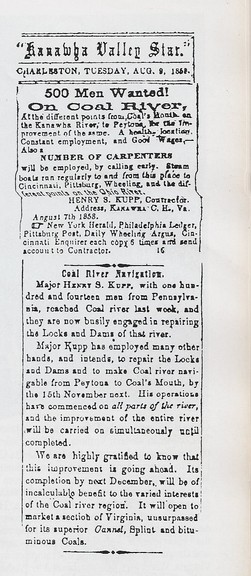
An article from Jan. 30, 1860, Kanawha Valley Star about a steam-boat travelling up the Coal River. Taken from Kanawha Valley Images, pg. 69.
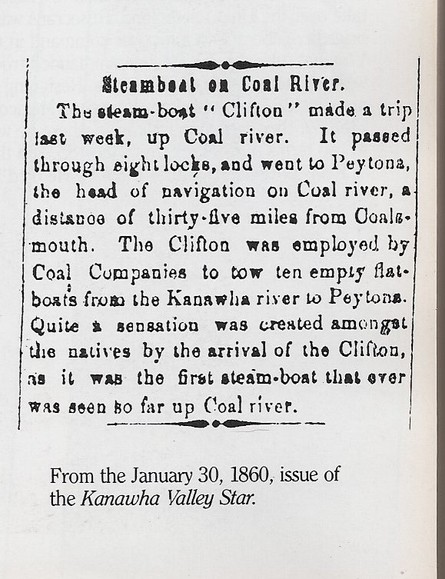
Photo and bio of William Rosecrans. Taken from Kanawha Valley Images, pg. 70.
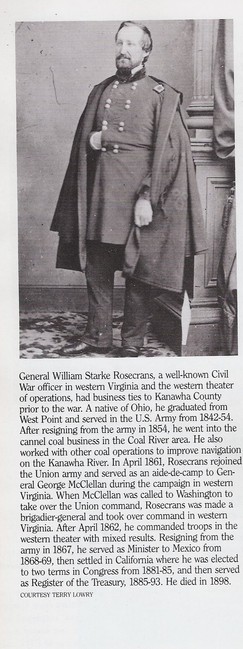
Two photos of steamboats on the Coal River. Taken from Tornado Remembers, pg. 11.
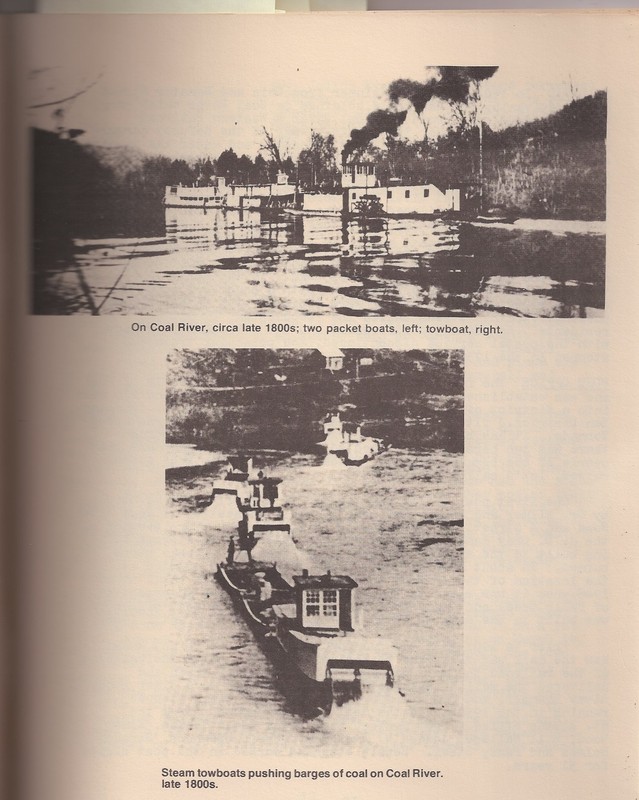
Photo of log jam on the Coal River. Notice men on logs and log booms. Some of the log booms are still present today in the form of vegetation covered islands in the middle of the river. Taken from Kanawha Valley Images, pg. 70.
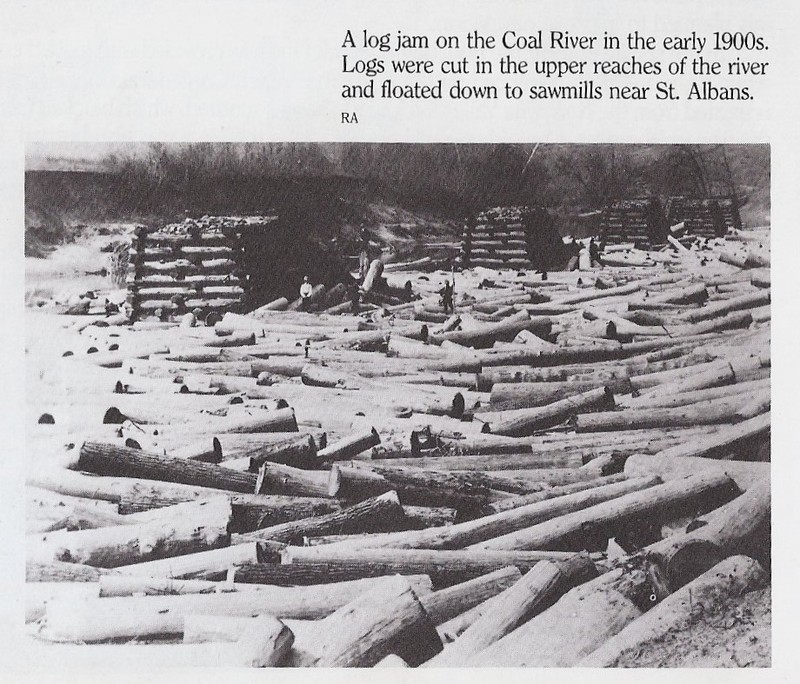
Lockmaster's House at Lock 1, St. Albans

Backstory and Context
Text-to-speech Audio
The Coal River was important to the growth of industry in the Kanawha Valley. Timber and coal were transported down the river by steam boat and by a system of locks and dams that were built beginning in the 1800s.
The locks and dams system that was constructed between the years 1854-1857 is described in the booklet Tornado Remembers as being: “stone-filled timbercribs that rested on wooden piles, with thick boards driven across the upstream sides. The locks were timbercribs 124 feet by 23 feet, with oak planks driven around their foundations to prevent undermining.” The original engineer was William Rosecrans. Floods and the Civil War caused the system to be abandoned for several years.
Major Henry S. Kupp with 114 men in August, 1868 began to repair the locks and dams. But by 1878 the system was abandoned once again because it was just too difficult to maintain.
The locks and dams were originally built to transport coal down the river. Cannel coal, which was used to make lamp oil, was transported in barges pushed by steam towboats. Even after the locks and dams were abandoned, the river was still used to transport logs. Roman Pickens, a local businessman, built a system of bumpers into the river in 1888 to hold back the logs. These can still be seen as small islands in the middle of the river near the intersection of Coal River Road and Strawberry Road.
The system of locks, dams and log booms was established as a national historic district and historic archaeological site throughout its entire length through Boone, Lincoln and Kanawha Counties.
